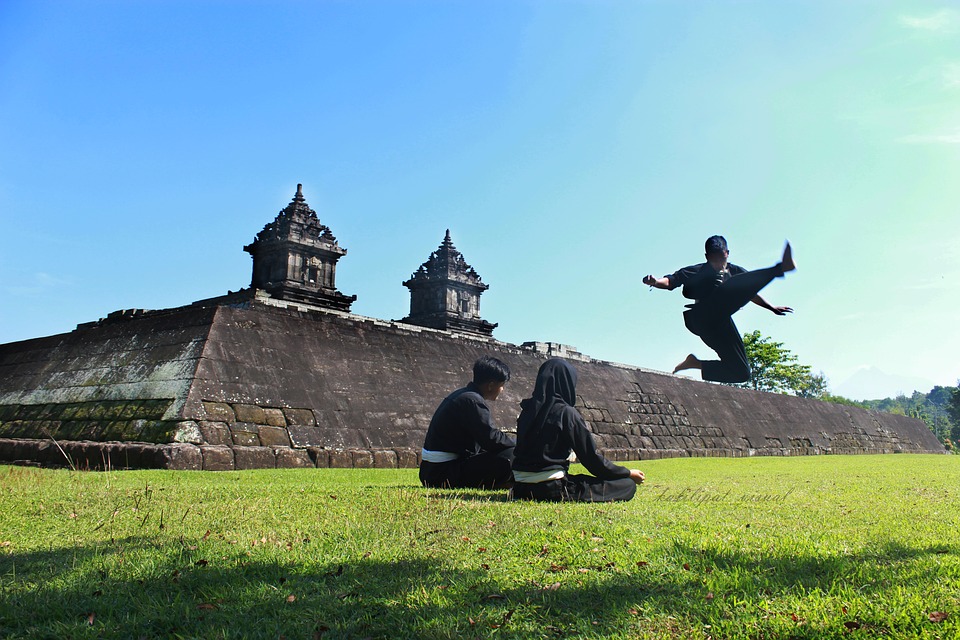
Highlight of Silat Melayu
Highlight of Silat Melayu
Silat Melayu or Silat is a traditional martial art that can be traced back to the Malay archipelago. Strictly speaking, the term Silat Melayu encompasses a vast array of knowledge related to combat tactics, war strategy, weaponry, and spiritual philosophy, culminating in the study and training of Silat as a martial discipline. While Silat Melayu primarily teaches hand-to-hand techniques, its training involving a variety of edged Malay weaponry makes it an integral aspect of any aspiring sword master’s journey.
A Short History of Silat Melayu
Throughout the centuries, before the advent of gunpowder weapons, the ancient kingdoms of the Malay archipelago have been historically well-defended against both European and East Asian invasions. Bloody battles for independence not just in Malaysia but in Indonesia have been fought and won by many Silat masters who have cemented the martial legacy of the Melayu “dance of death.” This includes the Melaka Sultanate’s Hang Tuah, a legendary 15th century warrior widely recognized as one of the first true masters of the art. Closer to the modern era, warriors like Datuk Bahaman, Mat Kilau, Panglima Salleh, and Yeop Mahidin are not only some of the most well-known Silat masters of the 19th to the 20th century, but are also famous for fighting for the region’s independence from foreign powers using Silat.
Silat Melayu Today
After Malaysia achieved independence from British rule in the last century, the National Silat Federation of Malaysia, also known as Persekutuan Silat Kebangsaan Malaysia (PESAKA) was founded by four different Silat masters to promote its practice in Malaysia and beyond. While each of these masters lead a different style of Silat, each style is still hinged on two main philosophies of movement. Bunga (blossoms) centers on the aesthetic movements responsible for Silat Melayu’s dance-like elements, both for the purposes of flow as well as for cultural preservation. Meanwhile, buah (fruits) centers on the hard and deadly movements aimed at incapacitating the enemy in the most efficient manner possible. While the four styles differ in a variety of ways, PESAKA continues to promote modern Silat practice not just in Malaysia but throughout the modern martial arts world.
The Weapons of Silat Melayu
As for the weapons pertinent to the practice of Silat, perhaps the most well-known is the keris or kris. Much like many varieties of Silat itself, the kris can be found not just in Malaysia, but also in other Southeast Asian countries like Indonesia and the Philippines. Apart from its distinctive wavy shape, the kris is also known throughout the world for how it’s constructed by folding and blending different metals together to forge a single blade, a prominent Asian technique for constructing shorter and stiffer blades as compared to those produced by European sword masters.
Silat Melayu: The Blog notes how many of the weapons in the Silat practitioner’s arsenal come from a variety of cultures, underscoring the collaborative origin of the deadly dance. The lengthy mandau, for instance, is a traditional jungle knife and headhunting sword that can be traced back to South Borneo. Meanwhile, the much shorter badik is of Sulawesi origin, and is used mainly for infighting. Many other blades, swords, spears, and other unique weapons have become integral parts of certain varieties of Silat Melayu, resulting in a range of martial techniques and practices that today comprise the whole of Silat.
Learning Silat in Malaysia
As such, the region has attracted its fair share of foreigners who wish to learn more about traditional Malay martial arts. Westerners who wish to train Silat Melayu in Malaysia will appreciate the fact that communicating with the locals won’t be a problem. In fact, as Expatbets’ guide to Malaysia indicates, many of the locals can converse very well in English as the country is a melting pot of cultures — the same reason why both its modern culinary and martial arts are a varied fusion of disciplines of different cultural origins. Furthermore, the gaming magazine notes these reasons to be why Malaysia has become a popular tourist destination, particularly for backpackers looking to experience a wide and diverse range of local activities.